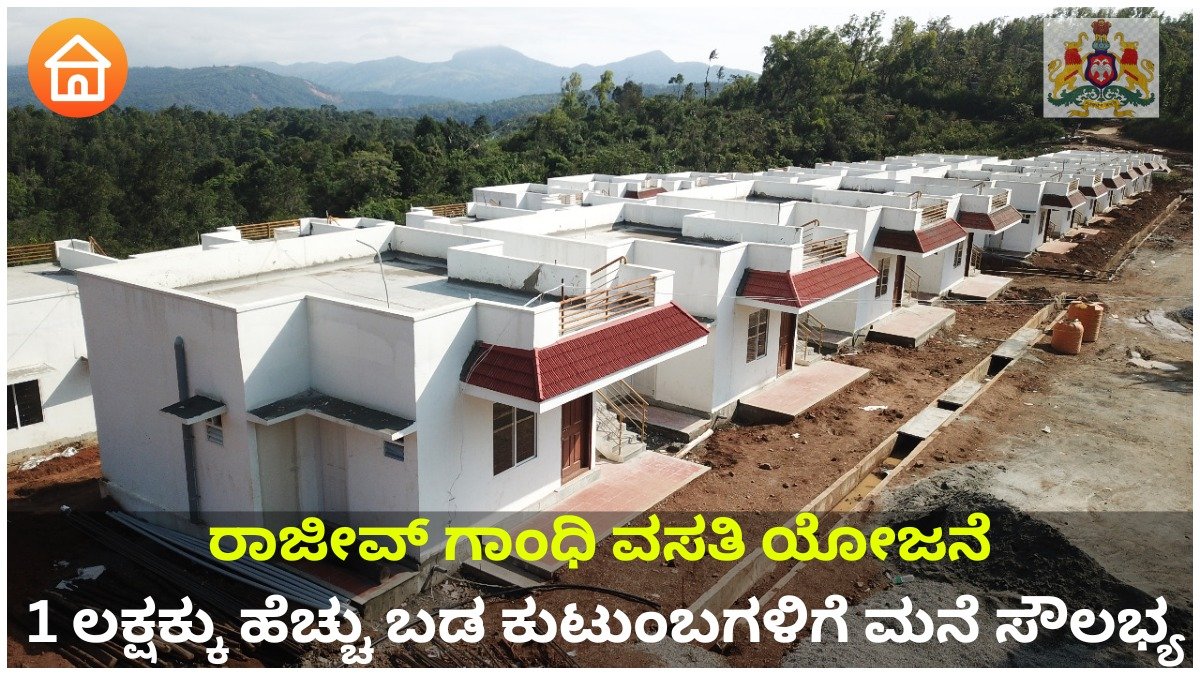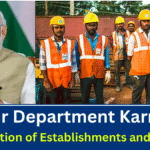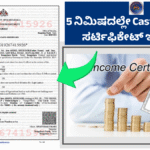Housing is not merely a commodity—it is a *fundamental human right, indispensable to social stability and economic security. In India, millions still live without homes that provide dignity and safety. The *Rajiv Gandhi Housing Scheme (RGHS) stands as an enduring effort to close that gap. Among its most ambitious components is the *“One Lakh Houses for You” initiative, which aims to deliver *100,000 affordable homes annually to India’s most marginalized households. Anchored in the vision of “Housing for All by 2030,” this grassroots-focused program aligns with United Nations Sustainable Development Goal 11, which advocates inclusive, resilient, and sustainable human settlements.
2. Origins and Evolution of RGHS
Named in tribute to former Prime Minister Rajiv Gandhi, the RGHS first took shape in the early 1990s with the goal of enabling economically weaker sections (EWS) to access safe, durable housing. Originally administered through state governments, it evolved across decades:
- 1990s: Initial rollout by various state governments
- 2000s: Integration with state Housing Boards and rural poverty alleviation programs
- 2010 onwards: States such as Karnataka, Tamil Nadu, and Andhra Pradesh began modernizing systems and digitizing operations
- *2020–2025: Strategic convergence with central flagship initiatives like *Pradhan Mantri Awas Yojana (PMAY), thus increasing scale and impact
This progressive alignment has enabled state models to interlink with nationwide frameworks, improving efficiency and reach over time.
3. Vision & Mission
Vision:
To secure a safe, permanent, dignified home for every Indian family, particularly those from marginalized backgrounds.
Mission Objectives:
- Annual construction of 1 lakh housing units per state, reaching urban and rural poor
- Promote inclusive development, prioritizing women, SC/STs, OBCs, minorities, widows, and persons with disabilities
- Facilitate access to essential services—education, sanitation, electricity, and livelihood—linked to home ownership
4. The “One Lakh Houses for You” Initiative
While centrally inspired, the implementation is decentralized and state‑led, allowing regional adaptations.
Karnataka Example
- Executed through Rajiv Gandhi Rural Housing Corp. Ltd. (RGRHCL)
- Collaborates with the Karnataka Slum Development Board (KSDB)
- Objective: Deliver 1 lakh homes annually under the Ashraya program targeting slum dwellers and rural poor
Andhra Pradesh Model
- Merged with the YSR Housing Scheme, it already surpasses one lakh homes per year
- Offers free land allocation, cement subsidies, and full or partial cost waivers for poor families
Because states differ in land availability, administrative structure, and resources, models adapt accordingly, though core principles remain consistent.
5. Types of Housing Units
Two broad typologies: urban and rural, each designed to match contextual needs.
Urban Housing
- Multi‑storey G+1 or G+2 apartment blocks
- Carpet area of 350–500 sq. ft. per unit
- Built with RCC framing and include water, electricity, sewage, and parking provisions
Rural Housing
- Individual “pucca” houses on plots typically around 25′ × 30′
- Built with durable brick walls, tiled or precast concrete roofs
- Basic utilities like water supply, sanitation, and electricity integrated where feasible
6. Key Features & Components
- Subsidized or fully free homes depending on beneficiary category
- Utilization of Direct Benefit Transfer (DBT) to curb corruption and ensure funds reach recipients directly
- Construction via Beneficiary‑Led Construction (BLC) or Turnkey/contractor delivery, as suitable
- Geo‑tagging of each house at critical stages (foundation, roof level, completion) to promote transparency
- Homes often registered in women’s names, or jointly, to empower female household heads
7. Detailed Eligibility Criteria
Residency & Documentation
- Must be a permanent resident of the implementing state
- Must provide proof of address, Aadhaar, and identity
Income Limits
- EWS: Annual income under ₹3 lakh
- LIG (where applicable): ₹3–6 lakh/year
Ownership Status
- Should not own a pucca house anywhere
- Should either possess land eligible for housing or qualify for government land allocation
Priority Groups
- SC/ST families
- OBCs and recognized minorities
- Women‑headed households, widows, and especially senior citizens
- Differently‑abled persons
8. Financial Structure & Subsidy Breakdown
| Component | Amount (₹) |
|---|---|
| Central Assistance | ₹1.50 lakh (urban) |
| State Assistance | ₹1.50–2.00 lakh |
| Beneficiary Contribution | ₹0 to ₹50,000 |
| Total Cost per Unit | ₹3–5 lakh |
- Special categories (e.g. SC/ST, widows) may have beneficiary share fully waived
- Central funds are released in three phases: 40% on sanction, 40% at roof level, and 20% upon completion
9. Step‑by‑Step Application Process
Online Process
- Navigate to the state housing portal (e.g. ashraya.karnataka.gov.in)
- Register using Aadhaar and mobile number
- Select the “One Lakh Houses under RGHS” program
- Upload documents; complete form and submit
- Receive an acknowledgement number for tracking
Offline Process
- Collect application form from Gram Panchayat or ULB office
- Attach required documents and photographs
- Submit to RGRHCL or relevant district housing office
- Undergo field verification, then await final selection
10. Required Documentation
Mandatory checklist:
- Aadhaar Card
- Annual Income Certificate
- Caste Certificate (if applicable)
- Land ownership papers or lease certificate (or application for allocation)
- BPL ration card
- Recent photo
- Bank account information for DBT
11. Construction Techniques & Materials
- Walls: Burnt clay bricks or fly‑ash bricks
- Roof: RCC slabs or precast cement sheets
- Doors/Windows: Steel, aluminum, or PVC frames
- Flooring: Cement/screed base or ceramic/tiling finishes
- Utilities: Water, electricity, toilets from allied schemes such as Swachh Bharat, Jal Jeevan Mission, Saubhagya
Sustainability Highlights
- Optional solar lighting
- Compost pits and soak‑pits in rural locations for eco‑sanitation
12. Monitoring & Implementation Oversight
- State‑level nodal agency (e.g., RGRHCL) coordinates planning and funds
- District committees supervise site audits, ensure quality standards
- Field engineers oversee structural compliance and safety
- Use of MIS dashboards and mobile apps enables real‑time monitoring
13. Geo‑Tagging & Digital Monitoring
Each house is geo‑tagged at three critical junctures—at foundation, roof level, and completion—to:
- Prevent duplicate beneficiary claims
- Improve accountability and quality oversight
- Facilitate data‑driven fund disbursement
14. Stakeholder Engagement
Multiple actors contribute to a seamless interface:
- State Housing Boards & Rural/Urban Local Bodies
- Panchayati Raj Institutions for rural outreach
- Banks/NABARD, especially for credit‑linked assistance
- Contractors, SHGs, and third‑party audit agencies to ensure transparency and empower local communities
15. Synergy with Other Welfare Schemes
The RGHS initiative is integrated with several flagship government schemes to augment its impact:
- PMAY-U/G: Offers credit-linked subsidies in both urban and rural segments
- Swachh Bharat Abhiyan: Enables household toilets
- Jal Jeevan Mission: Delivers safe water connections
- Saubhagya Yojana: Grants free electricity connections
This cross‑scheme integration ensures that housing recipients receive a holistic upgrade in living conditions.
16. Empowering Women Through Housing
- Houses are usually registered in the name of women or jointly with women
- Women are deeply involved in SHGs for material production or supply
- Programs encourage female labor engagement, including as masons and site staff
This approach both ensures property rights for women and promotes local economic participation of women.
17. Beneficiary Stories & Real‑World Outcomes
Case 1: Chikmagalur, Karnataka (2023)
- Mahalakshmi, a widow and mother of two, received a pucca house after living in a mud‑walled hut
- Her new home included a toilet, electricity supply, and a safe water connection—completely transforming her family’s living conditions
Case 2: Anantapur, Andhra Pradesh
- Over 50 homes built for Dalit families in a remote rural enclave
- Homes came with *tiled roofs, **solar lanterns, and *ownership transferred to women heads of households
Such stories underscore the social and psychological uplift that follows from stable housing.
18. Budget Allocation & Funds Flow
- State governments typically budget between ₹5,000 and ₹6,000 crore annually for RGHS programs
- Central funding is disbursed in three installments to incentivize progress milestones:
- 40% upon sanction
- 40% when roof level is reached
- 20% upon completion
- The flow follows this path: Government of India → State Treasury → State Housing Agency → Beneficiary Bank Account
19. Innovation and Technology
- Mobile apps used by field engineers to record site progress, upload photos, and geo-tag houses
- Aadhaar‑based biometric verification ensures secure beneficiary identity
- Drone tech used in slum upliftment projects for aerial mapping
- Early pilots testing AI‑based cost prediction and resource planning to enhance efficiency
20. Key Challenges—and How They’re Addressed
| Challenge | Solution(s) |
|---|---|
| Scarcity of land | Use of government land banks, or equitable lease allocation |
| Funding delays | DBT linked to milestones, real‑time MIS upload |
| Contractor malpractices | Use of pre‑verified vendors, engagement with SHGs |
| Poor material quality | Uniform procurement guidelines, quality audits |
These solutions aim to strengthen implementation while containing costs and enhancing integrity.
21. Outreach, Awareness & Grievance Mechanisms
- Housing Melas and Janaspandana camps held regularly to inform prospective applicants
- Toll‑free helpline numbers, official social media channels, and portal-based complaint registration
- Feedback loops integrated into mobile apps and state portals to remedy disputes swiftly
22. Scaling to 2030
- State targets aim to reach 20 lakh homes built or upgraded by 2030
- Emphasis on *Tier‑2 and Tier‑3 cities, as well as *migrant workers and nomadic tribal communities
- Plans to retrofit older structures, improve insulation, and upgrade access to water and sanitation
23. Broader Impact: Social & Economic Outcomes
Social Gains
- Boost in girl child school attendance, as secure homes reduce safety risks
- Improved sanitation and hygiene, lowering communicable disease incidence
- Greater privacy and safety at home, reducing domestic vulnerability
Economic Benefits
- Generated employment for construction laborers, including women
- Growth of MSME suppliers in local building material supply chains
- Houses become financial assets, improving access to credit and stability
24. Summary of Key Strengths
The “One Lakh Houses for You” initiative under RGHS is more than a construction program—it’s a fulcrum of dignity, empowerment, and inclusion. Salient strengths include:
- Coordination with central and state-level policies
- Use of technology for transparency and efficiency
- Women-centric ownership and participation
- Integration with other welfare schemes to deliver services beyond a roof
- Community‑level involvement via SHGs, NGOs, and local institutions
25. Conclusion
When implemented effectively, the 100,000-houses‑a‑year mission can reset trajectories of poverty and marginalization. A home is far more than bricks and mortar—it is the bedrock of hope, security, and opportunity. Each target accomplished moves India one step closer to an equitable future, where every individual can claim the dignity that begins at home.











